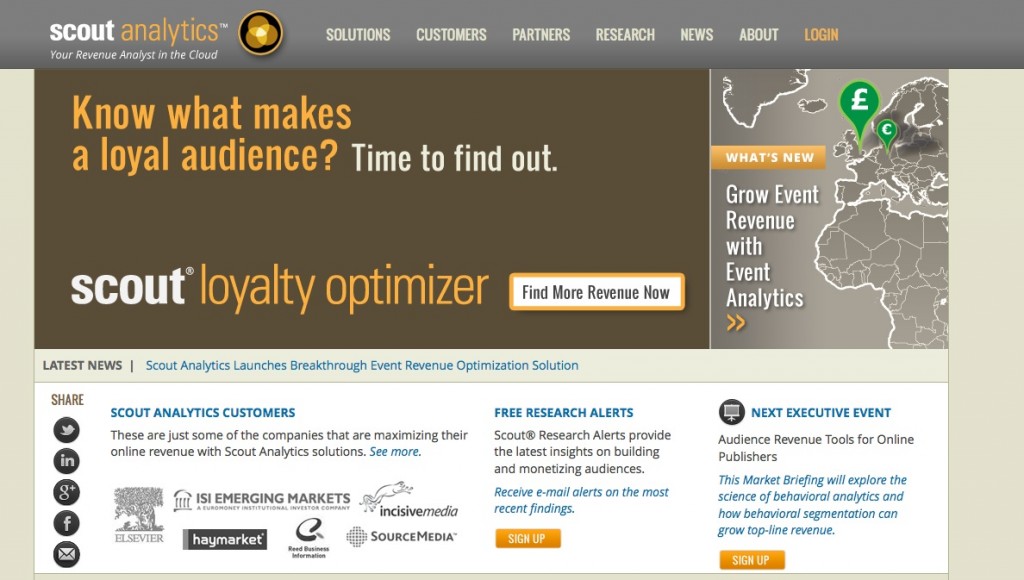Eighty per cent of a typical news site’s digital revenue comes from their loyal, returning audience, those the publisher has an email addresses for, with 20 per cent of revenues coming from flyby users.
But 80 per cent of traffic comes from the flybys who generate the minority of the revenue.
The statistics, which are unlikely to come as a great surprise to many publishers, were shared at today’s ‘audience revenue tools for online publishers’ conference by Matt Shanahan, SVP strategy for Scout Analytics, one of the data tools discussed at the event.
Shanahan talked of the positives and negatives of revenues from print versus digital.
He said the main difference is that print is based on “distribution” whereas in digital, publishers get paid for “usage”.
Outlining the negatives of shifting to digital, Shanahan said publishers can expect “to chop in half” revenues. Meanwhile, there is a need to sell more ads, he said.
One of the many positives, Shanahan said, is that with analytics “you know what people are reading”.
Shanahan therefore encourages publishers to focus on analytics and to segment the audience by revenue. Scout Analytics calls it “revenue-weighted behavioural segmentation”.
A publisher should:
- Look at what editorial is generating the most ad revenue
- Ask ‘can readers be converted to subscribers?’
- Look at what usage profiles have most event revenue potential
- Look at audience development and what sources have the highest lifetime value
He says those who dig into the data in this way can “grow revenues by 200 to 500 per cent”.
“An anonymous audience is an anchor,” Shanahan said, explaining the value that comes when a publisher has an email address for a reader.
He showed statistics to demonstrate how a registered audience will “always be much smaller in number” but showed how they generate far more revenue for the publisher.
Shanahan said that “even if you have a registered user it doesn’t mean they come everyday”. But if you have their email address, you still get to market to them.
And loyal readers have the same conversion rate as those who do visit the site every day, he said, when marketing daily deals by email, for example.
